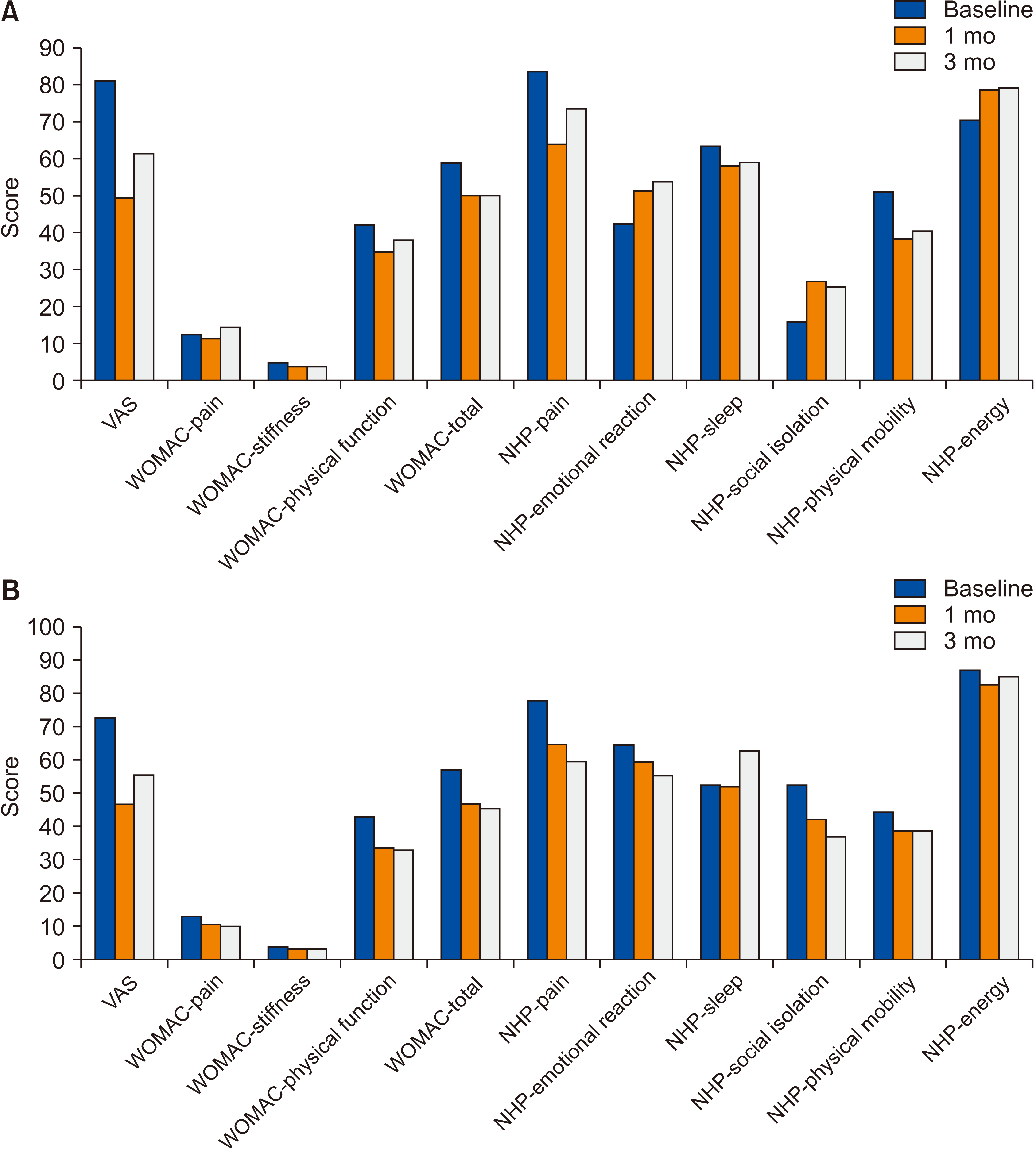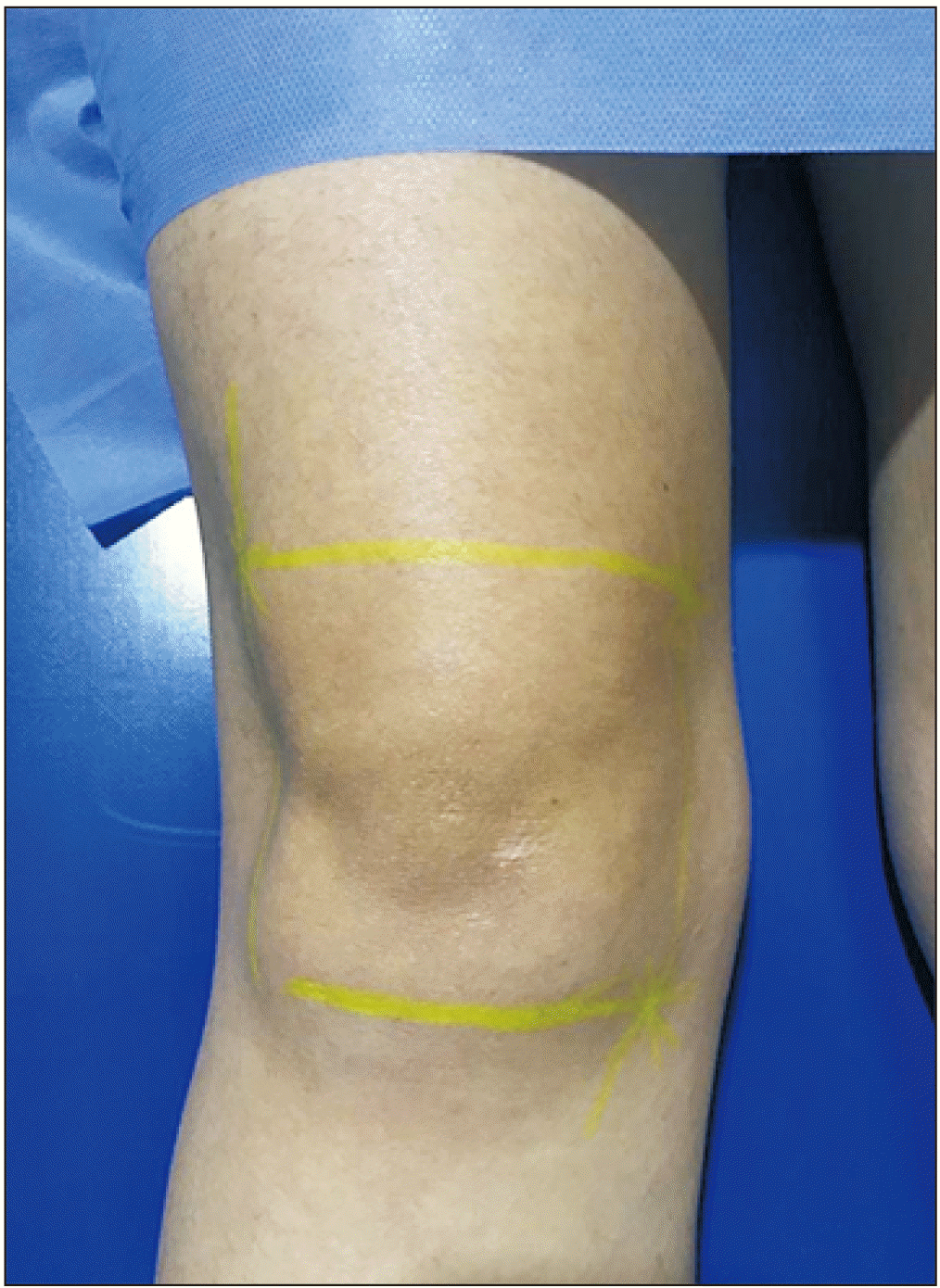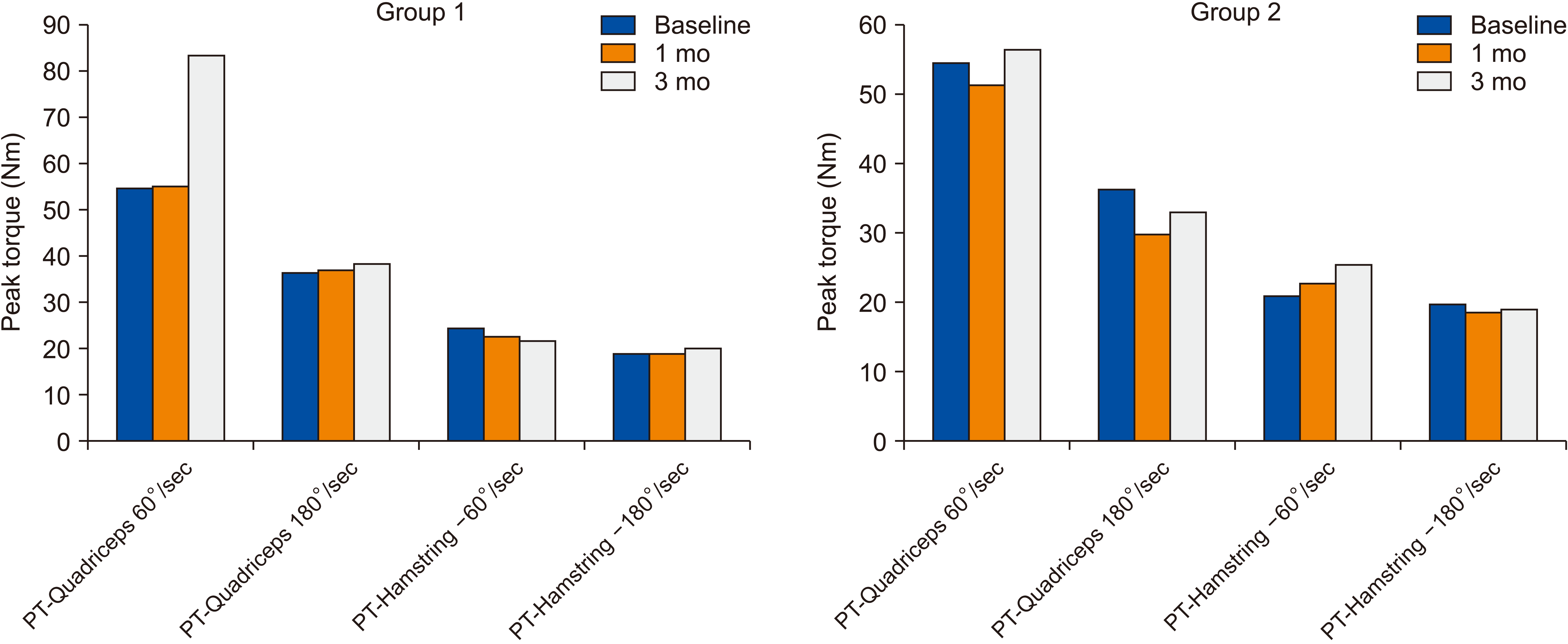1. Li CF, Chen YJ, Lin TY, Hsiao YH, Fu JC, Chen CH, et al. 2019; Immediate responses of multi-focal low level laser therapy on quadriceps in knee osteoarthritis patients. Kaohsiung J Med Sci. 35:702–7. DOI:
10.1002/kjm2.12113. PMID:
31390143.

3. Kim DH, Lee MS, Lee S, Yoon SH, Shin JW, Choi SS. 2019; A prospective randomized comparison of the efficacy of ultrasound- vs fluoroscopy-guided genicular nerve block for chronic knee osteoarthritis. Pain Physician. 22:139–46.
4. Crawford DC, Miller LE, Block JE. 2013; Conservative management of symptomatic knee osteoarthritis: a flawed strategy? Orthop Rev (Pavia). 5:e2. DOI:
10.4081/or.2013.e2. PMID:
23705060. PMCID:
PMC3662262.

5. Santaguida PL, Hawker GA, Hudak PL, Glazier R, Mahomed NN, Kreder HJ, et al. 2008; Patient characteristics affecting the prognosis of total hip and knee joint arthroplasty: a systematic review. Can J Surg. 51:428–36.
6. Kesikburun S, Yaşar E, Uran A, Adigüzel E, Yilmaz B. 2016; Ultrasound-guided genicular nerve pulsed radiofrequency treatment for painful knee osteoarthritis: a preliminary report. Pain Physician. 19:E751–9.
7. Choi WJ, Hwang SJ, Song JG, Leem JG, Kang YU, Park PH, et al. 2011; Radiofrequency treatment relieves chronic knee osteoarthritis pain: a double-blind randomized controlled trial. Pain. 152:481–7. DOI:
10.1016/j.pain.2010.09.029. PMID:
21055873.

8. McCormick ZL, Korn M, Reddy R, Marcolina A, Dayanim D, Mattie R, et al. 2017; Cooled radiofrequency ablation of the genicular nerves for chronic pain due to knee osteoarthritis: six-month outcomes. Pain Med. 18:1631–41. DOI:
10.1093/pm/pnx069. PMID:
28431129.

9. Protzman NM, Gyi J, Malhotra AD, Kooch JE. 2014; Examining the feasibility of radiofrequency treatment for chronic knee pain after total knee arthroplasty. PM R. 6:373–6. DOI:
10.1016/j.pmrj.2013.10.003. PMID:
24373908.

10. Yasar E, Kesikburun S, K©¥l©¥ç C, Güzelküçük Ü, Yazar F, Tan AK. 2015; Accuracy of ultrasound-guided genicular nerve block: a cadaveric study. Pain Physician. 18:E899–904. PMID:
26431143.
11. Sutaria RG, Lee SW, Kim SY, Howe R, Downie SA. 2017; Localization of the lateral retinacular nerve for diagnostic and therapeutic nerve block for lateral knee pain: a cadaveric study. PM R. 9:149–53. DOI:
10.1016/j.pmrj.2016.06.017. PMID:
27346091. PMCID:
PMC5182177.

12. Baert IAC, Meeus M, Mahmoudian A, Luyten FP, Nijs J, Verschueren SMP. 2017; Do psychosocial factors predict muscle strength, pain, or physical performance in patients with knee osteoarthritis? J Clin Rheumatol. 23:308–16. DOI:
10.1097/RHU.0000000000000560. PMID:
28816769.

13. Altman R, Asch E, Bloch D, Bole G, Borenstein D, Brandt K, et al. 1986; Development of criteria for the classification and reporting of osteoarthritis. Classification of osteoarthritis of the knee. Diagnostic and Therapeutic Criteria Committee of the American Rheumatism Association. Arthritis Rheum. 29:1039–49. DOI:
10.1002/art.1780290816. PMID:
3741515.
15. Yilmaz V, Umay E, Gundogdu I, Aras B. 2019; The comparison of efficacy of single intraarticular steroid injection versus the combination of genicular nerve block and intraarticular steroid injection in patients with knee osteoarthritis: a randomised study. Musculoskelet Surg. doi: 10.1007/s12306-019-00633-y. DOI:
10.1007/s12306-019-00633-y. PMID:
31828590.

16. Bellamy N, Buchanan WW, Goldsmith CH, Campbell J, Stitt LW. 1988; Validation study of WOMAC: a health status instrument for measuring clinically important patient relevant outcomes to antirheumatic drug therapy in patients with osteoarthritis of the hip or knee. J Rheumatol. 15:1833–40.
17. Busija L, Pausenberger E, Haines TP, Haymes S, Buchbinder R, Osborne RH. 2011; Adult measures of general health and health-related quality of life: Medical Outcomes Study Short Form 36-Item (SF-36) and Short Form 12-Item (SF-12) Health Surveys, Nottingham Health Profile (NHP), Sickness Impact Profile (SIP), Medical Outcomes Study Short Form 6D (SF-6D), Health Utilities Index Mark 3 (HUI3), Quality of Well-Being Scale (QWB), and Assessment of Quality of Life (AQoL). Arthritis Care Res (Hoboken). 63(Suppl 11):S383–412. DOI:
10.1002/acr.20541. PMID:
22588759.
19. Guyatt GH, Sullivan MJ, Thompson PJ, Fallen EL, Pugsley SO, Taylor DW, et al. 1985; The 6-minute walk: a new measure of exercise capacity in patients with chronic heart failure. Can Med Assoc J. 132:919–23. PMID:
3978515. PMCID:
PMC1345899.
20. Jones CJ, Rikli RE, Beam WC. 1999; A 30-s chair-stand test as a measure of lower body strength in community-residing older adults. Res Q Exerc Sport. 70:113–9. DOI:
10.1080/02701367.1999.10608028. PMID:
10380242.

21. Norman GR, Sloan JA, Wyrwich KW. 2003; Interpretation of changes in health-related quality of life: the remarkable universality of half a standard deviation. Med Care. 41:582–92. DOI:
10.1097/01.MLR.0000062554.74615.4C. PMID:
12719681.
22. Gkrilias P, Tsepis E, Kokkalis Z, Panagiotopoulos E, Megas P. 2018; The relationship between isokinetic strength and functional performance tests in patients with knee osteoarthritis. J Phys Ther Sci. 30:888–91. DOI:
10.1589/jpts.30.888. PMID:
29950786. PMCID:
PMC6016287.

23. Kim DH, Choi SS, Yoon SH, Lee SH, Seo DK, Lee IG, et al. 2018; Ultrasound-guided genicular nerve block for knee osteoarthritis: a double-blind, randomized controlled trial of local anesthetic alone or in combination with corticosteroid. Pain Physician. 21:41–52. DOI:
10.36076/ppj/2018.51. PMID:
29357330.
24. Maia PAV, Cossich VRA, Salles-Neto JI, Aguiar DP, de Sousa EB. 2019; Viscosupplementation improves pain, function and muscle strength, but not proprioception, in patients with knee osteoarthritis: a prospective randomized trial. Clinics (Sao Paulo). 74:e1207. DOI:
10.6061/clinics/2019/e1207. PMID:
31778431. PMCID:
PMC6844143.






 PDF
PDF Citation
Citation Print
Print





 XML Download
XML Download